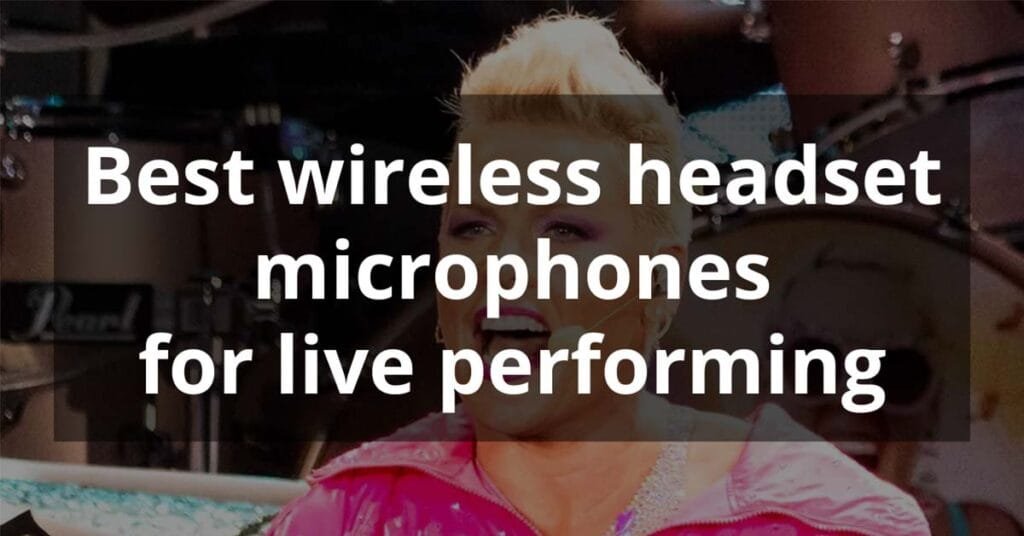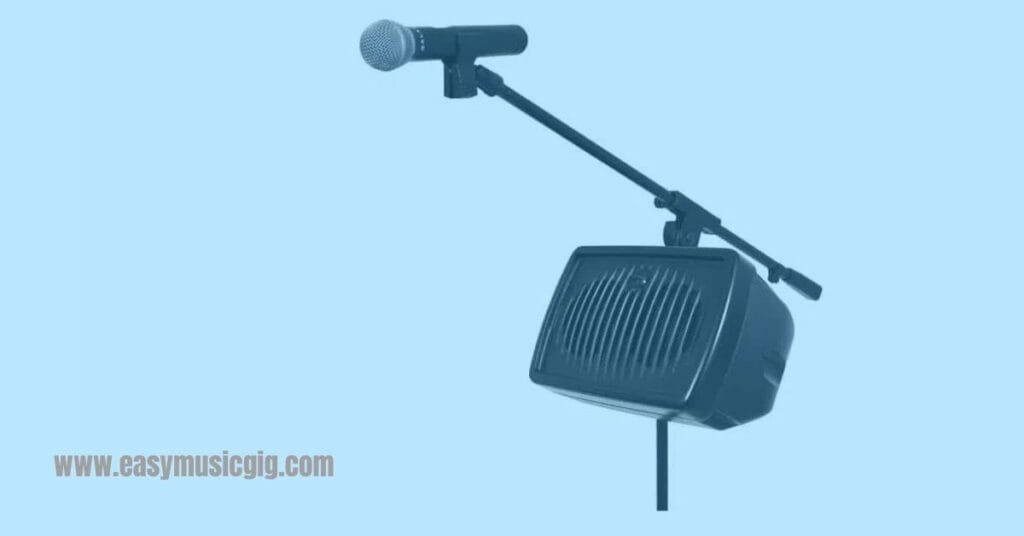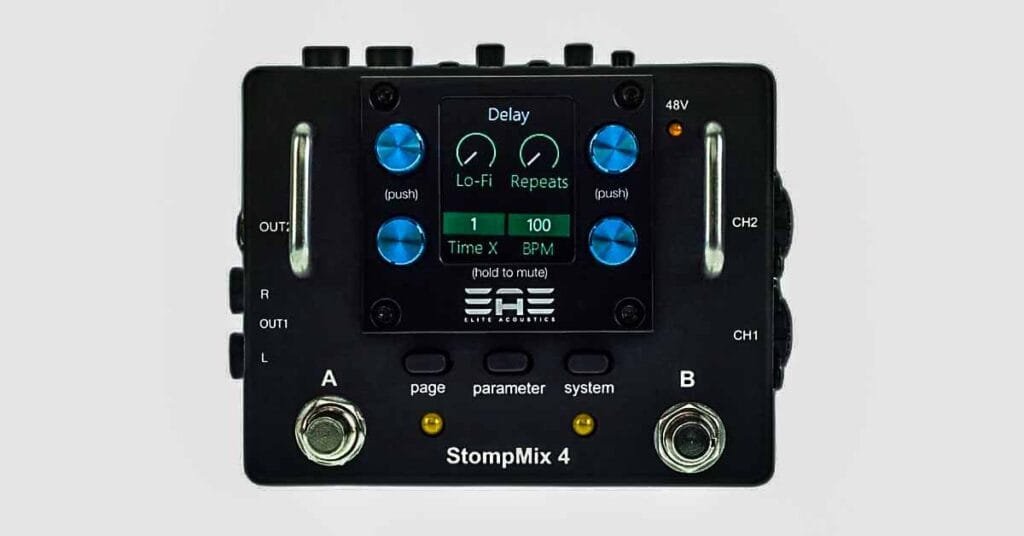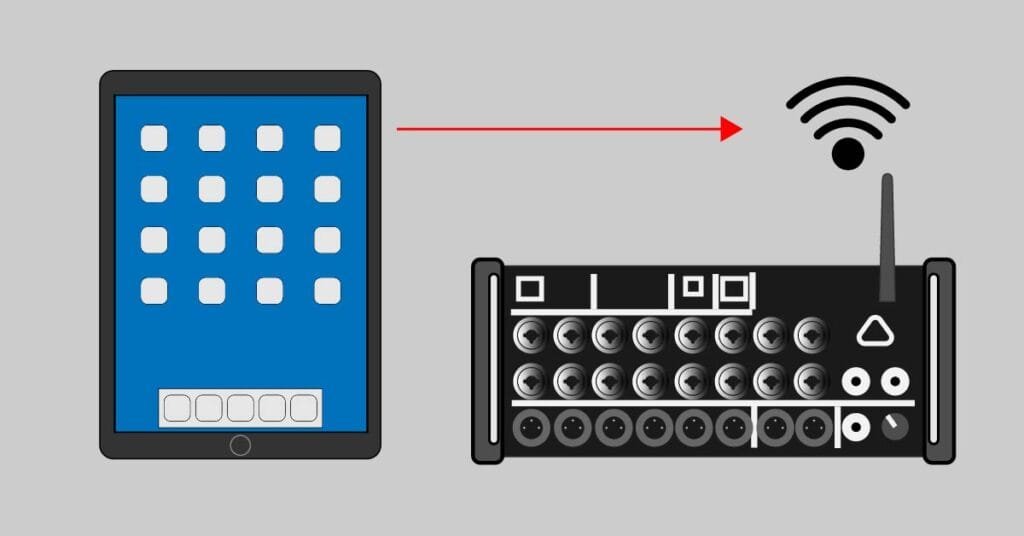7 best Wireless headset microphones for live performing: The ultimate guide for 2024
Introduction
If you are a professional singer, presenter, or performer who needs complete freedom of movement while performing, and at the same time needs a consistent sound quality, this is the solution for you. Wireless headset microphones are a hands-free option that will significantly improve your energetic performance.
With many different models available, choosing the right headset microphone for live performances can become an overwhelming task.
After two decades of being a musical instruments retailer, 750 gigs played with my current band, and heavy research, I have learned all the pros and cons of gigging gear. I have compiled this list of the best wireless headset microphones so you don’t have to do all the research by yourself.
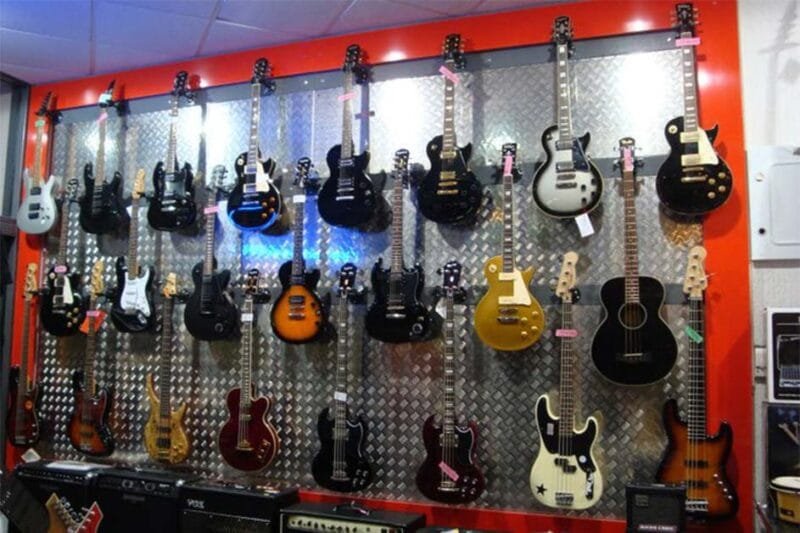
There are many factors to consider, but don’t worry, in this article, I will explain all you need to focus on and offer you a list of the best headset microphones for singing and live performances in today’s market.
Who are Wireless headset microphones for and what do they do
We are focusing on professionals who are in the music, performing, and all types of presenting businesses where the spoken word is used. Wireless headset microphones for these professions differ from those that are used for gaming or online jobs. Headset microphones for live gigs are expected to isolate the vocals and reproduce them with the highest possible quality without any unwanted background noise.
Professions that use headset microphones:
- Singers who dance or want complete freedom while performing
- Singers who also play an instrument, especially drummers
- Presenters of music concerts, event hosts, corporate gatherings, live TV shows,…
- Stage actors and performers
- Houses of worship
- Fitness instructors and coaches
- Music directors who need to move in front of the stage or backstage and remain audible
- Tour guides
- Wherever a live speaker is needed
For these uses, a good quality wireless headset microphone is essential for making your gigs easier.
Factors to consider when choosing Wireless headset microphones
1. Sound quality
A performance is remembered not only for the artistic contribution of the performer but also for the impression that the audio and the visual factors leave on an audience. The impression of audio is highly related to its quality. Sound quality, most people will agree, is the most important factor of a wireless headset microphone.
The best way to find the best microphone in your budget range would surely be to try a couple of them in a musical instruments store or even better in a live situation. Since this is not a possibility for many, this guide’s purpose is to help you narrow your candidates.
When checking out microphones look for ones that ensure a clear audio reproduction that faithfully represents your voice. Some are better for loud voices with a baritone or bass characteristic, while others are better for a vocal with a higher frequency tone.
A consistent sound is as important as its quality. Some microphones tend to stop working for short periods. That is something we definitely don’t want to happen during a Broadway musical
A wireless headset microphone should be able to reject any unwanted noise and feedback.
Sound quality is not equally important for all situations. A professional vocalist will want a high-quality microphone, but for occasional presentations with only spoken word involved you can be good with a more budget-friendly mic with entry-level quality sound.
2. Budget
Set your budget. Then read articles and watch YouTube videos about mics that fit your budget. After that take a look at a few microphones that are a step above your budget. If you find one that has some factors that are much better than the ones that are in your budget, stop and think about it. Can you buy the better one with monthly payments? Will this better microphone make me feel better during gigs? If yes, it is worth it.
Or, if you’re not in a hurry, wait and see if there will be any special sales, chances are, there will be.
3. Comfort
Face it, the usual gig lasts at least two hours and some can last for much more. The last thing you need is a headset microphone that doesn’t fit you right. It should fit you tightly enough so that it is stable and can’t fall off, but not too tight so that it is uncomfortable to wear.
Look for any sharp or bulging elements that can be structural or a manufacturer’s fault.
Also, make sure your headset microphone is adjustable in a way that it feels as comfortable as possible. You want the headset and earbands to be adjustable.
Comfort is critical for long-time usage but less for short-time usage. Single-ear microphone models are more discreet and are a bit more comfortable than dual-ear models which stay more firmly in place.
4. Polar pattern: Omnidirectional vs. directional
A polar pattern is a graph that shows a microphone’s sensitivity relative to the direction from where the sound is coming from. The graph represents that sensitivity in all directions, meaning 360 degrees.
0 degrees represents the front of the microphone or in practical words, where it is aimed at. 180 degrees represents the opposite side. Think of the opposite side as the side where the cable is plugged into the microphone.
A directional microphone is most sensitive to the sound that is coming from the front side, whereas an omnidirectional microphone is equally sensitive to sound coming from all sides of the microphone.

How do we know which microphone polar pattern we need? It all depends on what sounds we need to capture and reproduce and which sounds or feedback we need to block.
Use a directional headset microphone if
- You are performing on a stage with high levels of noise. The mic will mostly “pick up” the sound of your voice while rejecting most of the other unwanted noises like cymbals from the drum kit, which makes them the best choice for singing drummers.
- You are using loud monitors and want to avoid feedback.
- When used for speech in a room with bad acoustics. A directional headset microphone will minimize the reverberation in these situations.
Use an omnidirectional headset microphone if:
- Stage volume is low
- Used for speaking, especially good for worship
- Used with a choir
- Used in a windy situation. Directional microphones have rear openings where wind can enter and cause turbulence, while omnidirectional mics do not have rear openings.
- When you need a microphone that sounds very natural and can capture every nuance of a voice
- When you can’t get rid of the “Proximity effect” and still have a controlled sound volume around the microphone
In short, omnidirectional headset microphones are a good choice for speech, singing in places with lower sound levels, dancers, or someone who moves a lot as an actor in a musical. The Omni will capture every sound equally even when the distance between the mouth and microphone slightly changes.
Directional headset microphones are a better choice for loud stages with monitors and spaces with very poor acoustics.
5. Durability
Look for a microphone that has a construction that is sturdy enough for regular use. Nothing is worse than a product that just looks good, but gets damaged really after a couple of gigs.
Major brands offer models of headset microphones with many parts that can be replaced if broken or worn out. These microphones are made for professionals with frequent gigs, so they don’t have to worry if one of these parts has to be replaced.
6. Connectivity

There are so many connector types for headset microphones that it can get quite confusing. Almost every big-player microphone manufacturer has developed a type of their own
It’s very straightforward when you are buying a whole wireless system where you get the mic, transmitter, and receiver. They come with matching connections. If you are only buying a mic, you must pair the connection with the transmitter you have or are planning to buy.
Many manufacturers like DPA have various customization options when ordering one of their wireless headset microphones. One of them is the selection of a hard-wired connector for your microphone. So, if you happen to have a wireless transmitter that has one of the provided connector solutions you are good to go.
Even if they don’t have a hard-wired option that suits your wireless transmitter, you can buy an adaptor for any combination. But, watch out, these adaptors may cost you the price of a budget-priced microphone itself!
If you travel a lot, only with your mic, chances are, you will be offered a wireless transmitter with a different connection than your microphone’s. If your microphone is a top-quality one, in that case, it’s a good idea to invest in 2 or 3 adapters for the most used connection types.
This is a list of the most used connector types for wireless transmitters:
- MicroDot
- TA-3F Switchcraft
- TA-5F Switchcraft
- 4-pin Lemo
- A2DC
- Hirose 4-pin
- 1 / 4 inch
7. Battery life
Battery life is very important if a microphone is used for long periods of time or if used very often. Maybe this is not a real factor to consider when buying a wireless headset microphone because microphones don’t use batteries. Batteries are used in wireless transmitters that the microphone is plugged into. But since we have to match these two elements, be sure to get a microphone that is compatible with the transmitter that has battery life that suits your needs.
Components of a wireless headset system
There are three main components of a wireless headset system:
- The headset microphone
- The bodypack transmitter
- The wireless receiver

Best wireless headset microphones
When it comes to making a list of the best wireless headset microphones for performers the hardest thing to do is to arrange them by quality. Being a fan of a certain manufacturer is something we see in every product sector. But somehow it is very associated with microphones. Users very often, after finding a brand that suits them, tend to stick with the brand for a very long time.
So, when creating this list I tried to include all the major microphone brands and highlight their best headset mics. Some brands are general microphone brands, while some are specialized in headset microphones like DPA or Countryman.
My main goal was to help potential buyers get as much helpful information as possible in one place, instead of spending days on research and learning about wireless headset microphones.
1. Countryman H6

Countryman H6 headset microphone
Countryman is a manufacturer that’s been around since the ’60s. Their best-known products are specialized direct boxes (DIs) and headset microphones. The Countryman H6 has become a standard for a headset microphone for public speaking, especially popular with Houses of Worship and broadcasters.
Its minimalistic, low-profile headset design makes it one of the most popular choices for spoken word in the world. The discreet design makes it almost impossible to see from already from 15 feet away, so the audience’s attention will never be distracted by the equipment being used. It is extremely light and can be adjusted to the user’s needs.
Anything from a whisper to loud voices is reproduced in the most natural, cleanest way. The sweat-resistant connector on the included cable which is only 1.2mm thin will make this microphone work even in demanding conditions. The secure headset design makes this microphone so comfortable speakers won’t even know they’re wearing it.
Out-of-the-box, the microphone will need some EQ-ing, which is not a big problem. In the end, it all comes down to personal taste. There have been some reported issues with this microphone, but nothing that couldn’t be sorted out easily with Countryman’s support.
The options you have when choosing the Countryman H6 are more than enough to customize the microphone to your specific needs. There are three sensitivity options for you to choose from: W5 (with no band) for general speaking, W6 (blue band) for loud speaking and vocals, and W7 (purple band) for powerful vocals. Four color options are available: Light beige, tan, cocoa, and black.
Depending on your needs, you can choose two different capsules (Polar patterns): Omni-directional or Directional. When it comes to connectivity to wireless systems, the options are almost endless. Sennheiser, AKG, Shure, Audio Technica, or Line 6 wireless transmitters with every possible connector are in the option list.
Pros:
Cons:
2. DPA 4488 CORE

DPA 4488 CORE directional
headset microphone
A favorite among theater performers and public speakers, DPA is probably the one-to-go brand when it comes to headset microphones. Broadway and London West Side productions have been using DPA lightweight headset microphones as a standard for years. You almost can’t go wrong with a DPA microphone as long as you follow the main guidelines mentioned in the main factors to consider in this article.
DPA 4066 and 4088 have been the standard microphones for years, where the 4066 is an omnidirectional and the 4088 a directional one. The 40 series was upgraded to the 44 series in 2021, so now we have the 4466 and 4488 series. The 44 series introduces self-maintenance options, more adjustable parts, and a new anti-glare with PVD coating. Making the cable a replaceable one, DPA has prolonged the life of the 44 series.
I have listed the 4488 in this article only because it is a model that is oriented to singers. This is because Easymusicgig is mainly talking about musical instrument gear. I could have easily put the 4466 model here instead, which is the model to go with when spoken word is crucial.
Length and height are adjustable for the boom which has a sliding lock mechanism. The 4488 is a fits-all-shapes-and-sizes by using 3-point ear grips equipped with spring mechanisms which make the microphone very comfortable to wear.
Out-of-the-box DPA 4488 needs little or no EQ. The sound is amazing, clear, and extremely articulate. Everything from the faintest whisper to the loudest voice is captured in the most natural way. The DPA 4488 being a directional wireless headset microphone is ideal for singing. The cardioid polar pattern with an SPL rating of 144dB makes it resistant to unwanted feedback from monitors and other instruments.
It is water and humidity-resistant throughout its construction making it ideal for long-lasting events even in the hottest situations.
The DPA 4488 is compatible with Shure, Line 6, and TOA transmitters. Since the microphone is a condenser mic, you will need at least 5 to 10V from the transmitter, which you should consider. It comes with a foam windscreen and carrying case.
DPA is the industry leader in wireless headset microphones, so saying that the DPA 4488 is probably the best on this list is no surprise. If you are looking for the best possible microphone, and have the budget, go for the 4488 – an investment for the future.
Pros:
Cons:
3. Audio-Technica PRO 8HEx

Audio-Technica PRO 8HEx headset microphone
Audio-Technica is a popular brand that produces quality products at reasonable prices such as headphones, turntables, and microphones. The Pro 8HEx headset microphone is one of them. Actually, it isn’t meant to be a wireless headset microphone due to the fact that the cable is 7 feet long. But who cares, you can always find a way to wind the cable a bit and still use it as a wireless.
The Audio-Technica PRO 8HEx is designed for singing musicians like guitarists, keyboard players, and drummers. As you would expect, the polar pattern is unidirectional so you don’t have to worry about unwanted off-axis sound.
The frequency response that is 200Hz to 18kHz is very different from the mics in this list, but still, the microphone sounds very clear and articulate.
The cushioned support pads provide a very comfortable fit for a head-worn microphone in this price range. Features also include a mic boom that can be placed on either the left or right side, but unfortunately, the headband is not extendable. The size of the product is a bit bulky, but for the price, you shouldn’t worry unless you are a pro who needs a discreet microphone.
Pros:
Cons:
4. Acacia Audio LIZ Roadster

Acacia Audio LIZ Roadster headset microphone
Acacia Audio is pushing boundaries when it comes to the performance/price factor. They are producing extremely well-sounding microphones with attractive designs similar to the DPA models for a third or quarter of the price.
The Acacia Audio LIZ Roadster headset microphone is an affordable dual-ear head-worn with excellent sound. Its omnidirectional polar pattern minimizes plosives and wind noises. It also comes with a detachable cable making it a long-lasting budget-friendly investment.
The mic is compatible with Shure bodypack transmitters with TA4F-style connectors. The frequency response is 20Hz-20kHz, and with an SPL level of 110dB, it stands up to many similar more expensive products.
This is a great microphone for worship, schools, and anywhere where spoken word is needed. It is certainly a best buy for its price.
Pros:
Cons:
5. Shure SM35

Shure SM35
Performance headset condenser microphone
Shure SM35 is one of the most popular Headset microphones for singing. You can’t get wrong with Shure. They have been a synonym for high-quality microphones for many decades. If you’ve never tried an SM58, you probably haven’t been singing a lot. Many agree that the SM35 is the wireless microphone that gets closest to the sound of an SM58 handheld microphone.
Shure is well known for manufacturing every possible type of microphone, and wireless headsets are one of them. They have a product for every budget and need. I would say that the Shure SM35 is the best professional wireless headset microphone you can buy in the lower mid-priced range.
You can notice right away that this mic is made for singers due to the placement of the mic itself. As you’ve seen, the high-end headset microphones for public speaking are usually located on the side of the cheek, just a little bit behind the mouth. This microphone is located in front of the mouth. But don’t let that fool you. This mic also does a good job of reproducing clear sounds when spoken word is needed.
The mic has a frequency response of 40Hz – 20kHz and a maximum SPL of 153dB, which is enough for any singing you will be doing. The cardioid polar pattern does a great job of rejecting unwanted noise and feedback from monitors and other sound sources which is a must for live concerts.
Depending on where you order the mic, included in the package is either a Shure RPM626 preamp with a 3-pin XLR out, or a detachable XLR RPM400TQG phantom power adapter so you don’t have to worry about phantom power or connectivity.
The Shure SM35 is a very good wireless headset microphone designed for live vocals. Though there are some factors like comfort or instability, but overall you get a very decent microphone for the money.
Pros:
Cons:
6. Shure PGA 31

Shure PGA 31 headset microphone
This is another Shure product that will not disappoint you. The PG series is their budget-friendly line of products that is cheap to buy but comes with very good quality for the price you pay. Beginners and even professionals who don’t need all the bells and whistles of high-end wireless headset microphones are giving this microphone a thumbs-up.
This affordable wireless cardioid condenser headset microphone is great for speech and live vocal applications. The cardioid polar pattern makes it perfect for stages with loud monitors. The frequency range is 60Hz to 20kHz, paired with an SPL of 145dB making this microphone suitable for many applications.
The PGA31 features a TA4F 4-pin connector, which makes it pairable with other Shure wireless systems.
This microphone comes with a flexible gooseneck and an adjustable microphone position, while the included windscreen gets rid of plosives. Heavy breathing will be reproduced but still, some EQing can help with that. Many users agree that the microphone sounds just as many more expensive ones.
If you need a wireless headset microphone for your fitness activities or want to try out a wireless for your live concerts that will not break the bank, try this one out, you will Shure-ly be surprised with the quality for the money.
Pros:
Cons:
7. AKG Pro Audio CM311 L

AKG Pro Audio CM311 L headset microphone
AKG is one of the oldest microphone and headphone companies in the world founded in 1947 in Vienna, Austria. They are very well known for their wireless systems.
The AKG Pro Audio CM11L comes with a frequency range of 50Hz to 17kHz and a cardioid pattern. It is specially designed for live-sound applications where clear and quality sound without distortion is needed.
The microphone uses a technology called Differoid, which stands for differential cardioid. This newly developed technology from AKG cancels unwanted ambient noise from floor monitors, drums, and other sources. Differoid provides 12dB more gain before feedback than other cardioid microphones, making it a great choice for professional singers.
The dual-ear headset is somewhat robust compared to other brands like DPA or Countryman. That is no surprise since this microphone is designed for loud bands rather than speech. Nevertheless, the construction gives the user maximum comfort and freedom of movement on stage.
Drummers all over the globe have been reporting that the AKG CM311 has been the best mic they’ve ever used, which is a strong reference when buying a microphone for loud environments.
Pros:
Cons:
FAQs
Why don’t all singers use headset mics?
Singing is an art that has so many factors that paint the vocal picture. One of them is moving the microphone further or closer to the mouth to enhance vocal expression while singing. This effect can be done even with a microphone that is placed on a stand. Headset microphones don’t allow the singer to do this because they are always at the same distance from your mouth.
Lavalier vs. headset
The choice between a Lavalier and a headset microphone depends on factors like comfort, mobility, and the specific use case. Lavalier microphones are discreet and offer freedom of movement, ideal for presentations or interviews where the speaker needs to move around. Headset microphones provide more stability and are suitable for situations where the speaker needs to move vigorously or where hands-free operation is essential, like in theater performances or fitness instruction.

Pros and cons of using a headset microphone
Pros:
Cons:
Conclusion
There are many factors to consider when selecting a headset microphone for your live performances. We have covered the aspects of the main factors, which will make your decision of which microphone to buy easier for you.
The best professional microphone for singing in this list is definitely the AKG Pro Audio CM311 L. A mid-budget safe solution for singing is the Shure SM35, while the best budget solution is the Audio-Technica PRO 8HEx which is very impressive for its price.
The spoken word professional user should try out the DPA 4466 which was not reviewed in detail but was mentioned. The Countryman H6 is a standard for use in houses of worship.
If not tied to a certain budget, investing in a high-quality, lightweight, and comfortable wireless headset microphone will definitely make you a better performer. The same advice goes with all musical instrument gear.
When I owned my musical instrument shop, I used to tell this to parents buying their children’s first guitar. It’s always better to buy a guitar that is comfortable to play even if it’s a bit more expensive than your budget. An uncomfortable, always out-of-tune guitar will kill a child’s enthusiasm, and make it quit learning the instrument before having a chance to try a decent guitar.
